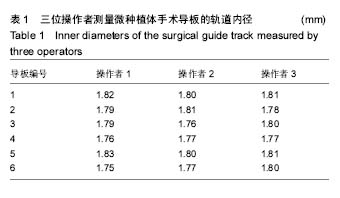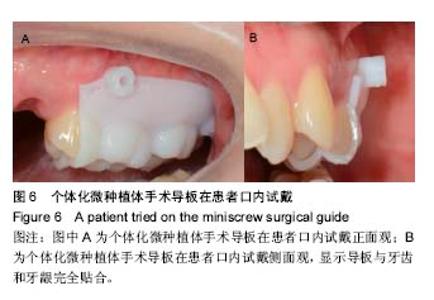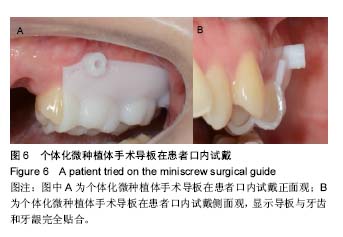| [1]Shan LH,Guo N,Zhou GJ,et al.Finite Element Analysis of Bone Stress for Miniscrew Implant Proximal to Root Under Occlusal Force and Implant Loading.J Craniofac Surg.2015;26(7):2072-2076.[2]Kang YG,Kim JY,Lee YJ,et al.Stability of mini-screws invading the dental roots and their impact on the paradental tissues in beagles. Angle Orthod.2009;79(2):248-255.[3]张梦洁,孙应明,王晓波,等.正畸微种植体精确植入的初步临床研究[J].国际口腔医学杂志, 2011,38(5):527-530.[4]Qiu LL,Li S,Bai YX.Preliminary safety and stability assessment of orthodontic miniscrew implantation guided by surgical template based on cone-beam CT images.Zhonghua Kou Qiang Yi Xue Za Zhi.2016; 51(6):336-340.[5]Liu H,Liu DX,Wang G,et al.Accuracy of surgical positioning of orthodontic miniscrews with a computer-aided design and manufacturing template.Am J Orthod Dentofacial Orthop. 2010; 137(6):721-728,728-729.[6]Melo AC,Andrighetto AR,Hirt SD,et al. Risk factors associated with the failure of miniscrews - A ten-year cross sectional study.Braz Oral Res.2016;30(1):e124.[7]Kuroda S,Yamada K,Deguchi T,et al.Root proximity is a major factor for screw failure in orthodontic anchorage.Am J Orthod Dentofacial Orthop.2007;131(4 Suppl):S68-S73.[8]Cho UH,Yu W,Kyung HM.Root contact during drilling for microimplant placement.Affect of surgery site and operator expertise.Angle Orthod. 2010;80(1):130-136.[9]Sharma K,Sangwan AK.Micro-implant placement guide.Ann Med Health Sci Res.2014;4(Suppl 3):S326-S328.[10]Estelita S,Janson G,Chiqueto K,et al.Predictable drill-free screw positioning with a graduated 3-dimensional radiographic-surgical guide: a preliminary report.Am J Orthod Dentofacial Orthop. 2009;136(5): 722-735.[11]Bae MJ,Kim JY,Park JT,et al.Accuracy of miniscrew surgical guides assessed from cone-beam computed tomography and digital models.Am J Orthod Dentofacial Orthop. 2013;143(6):893-901.[12]Tang M,Guo HM,Bai YX,et al.Application of integrated digital maxillodental model in computer aided design of individualized lingual brackets.Zhonghua Kou Qiang Yi Xue Za Zhi. 2012;47(8):501-504.[13]Tepedino M,Masedu F,Chimenti C.Comparative evaluation of insertion torque and mechanical stability for self-tapping and self-drilling orthodontic miniscrews - an in vitro study.Head Face Med. 2017;13(1):10.[14]Poorsattar BM,Ravadgar M,Poorsattar BM.Optimized orthodontic palatal miniscrew implant insertion angulation: a finite element analysis.Int J Oral Maxillofac Implants.2015;30(1):e1-e9.[15]董晶,张哲湛,周国良.Ⅱ类骨质中正畸微种植体锥度及植入角度对支抗稳定性影响的三维有限元分析[J]. 华西口腔医学杂志, 2014,32(1):13-17.[16]于海璐,蔡兴伟,马龙,等.不同植入角度及载荷方向对微种植体稳定性影响的三维有限元分析[J].解放军医学院学报, 2016,37(3):261-265.[17]邹双双,雷勇华,张亚梅,等.微种植体植入初期稳定性:错颌上颌后牙区颊侧骨皮质厚度分析[J].中国组织工程研究, 2015,19(12):1837-1841.[18]Qiu L,Haruyama N,Suzuki S,et al.Accuracy of orthodontic miniscrew implantation guided by stereolithographic surgical stent based on cone-beam CT-derived 3D images.Angle Orthod. 2012;82(2):284-293. |



